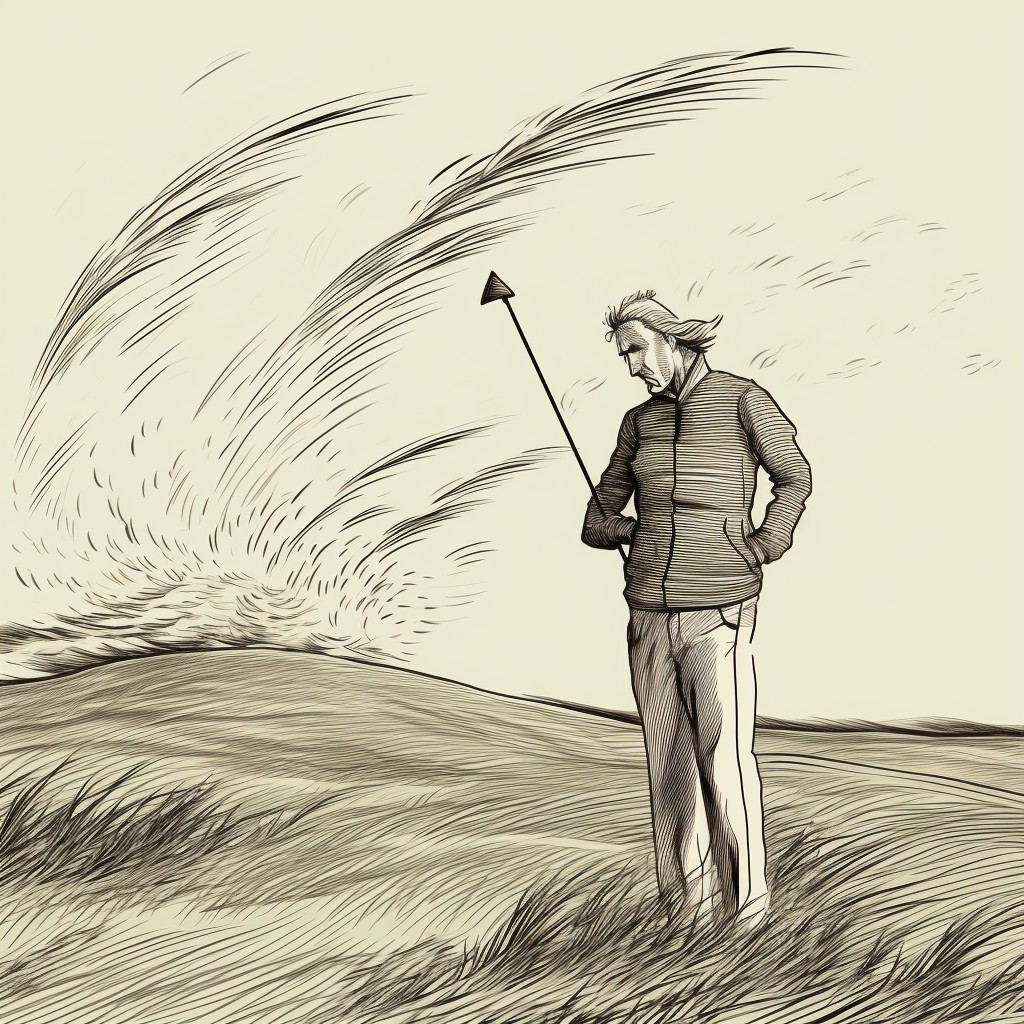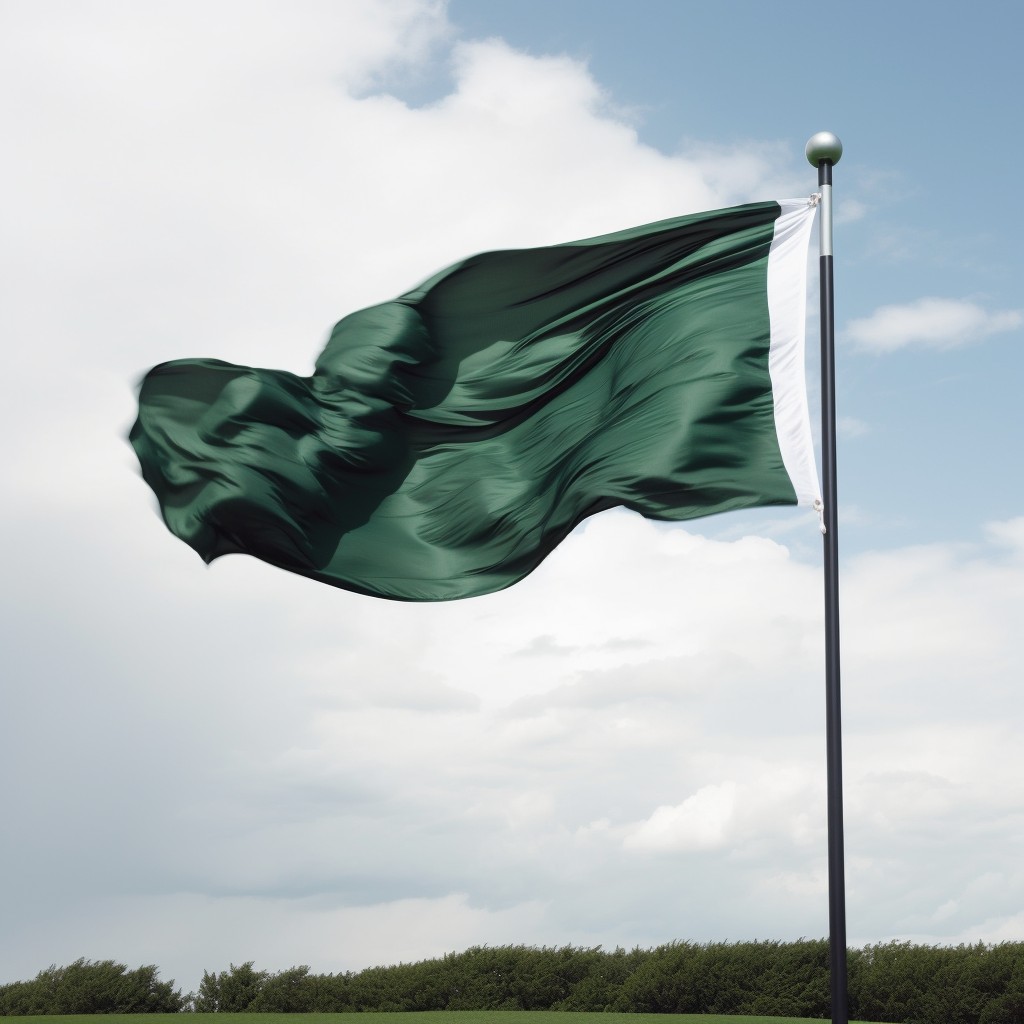
Introduction
Hey there, fellow golf enthusiast! We all know that playing golf in windy conditions can be quite a challenge. The wind has a significant impact on the ball’s flight and can cause even the best golfers to struggle on the course. But don’t worry, because in this article, we’re going to unlock the secret to playing better golf in the wind.
Our goal is to equip you with practical tips and strategies that you can use to conquer the wind and improve your game. By understanding the different types of wind, adjusting your club selection, ball position, and swing, and adopting a smart tactical approach, you’ll be well on your way to mastering the art of playing golf in the wind. So, let’s dive in and start tackling this exciting challenge together!

Understanding the Wind
Before we jump into the techniques to improve your golf game in the wind, it’s essential to have a good grasp of how the wind affects your shots. Knowledge is power, so let’s break down the different types of wind and how they can influence the ball’s flight.
A. Types of Wind
- Headwind – This is the wind blowing directly into your face, making the ball travel a shorter distance. It’s important to factor this in when selecting a club and planning your shot.
- Tailwind – When the wind is at your back, it’s called a tailwind. This wind can help your ball travel farther, but it can also make it harder to control the landing.
- Crosswind – As the name suggests, crosswind blows from one side of the course to the other. This type of wind can cause your ball to drift to the left or right, depending on the wind direction.
B. Effect of Wind on Ball Flight
The wind can cause your ball to rise or fall, depending on its direction and strength. It can also make the ball curve more or less than you intended. Understanding these effects will help you make better decisions when playing in windy conditions.
C. Judging Wind Direction and Strength
To accurately judge the wind, pay attention to the movement of trees, flags, and even your clothing. You can also try tossing a few blades of grass into the air to see which way the wind is blowing. Additionally, take note of how the wind changes throughout the course, as it can vary from one hole to the next.
Now that we’ve covered the basics of understanding the wind, let’s move on to the practical adjustments and strategies that will help you conquer the course when the wind picks up.

Adjusting Your Game
Windy conditions call for adjustments to your game. Let’s dive into the essential tweaks for club selection, ball position, and swing to better handle the wind.
A. Club Selection
- Clubbing up or down – Wind direction matters. In a headwind, consider clubbing up (using a longer club) to make up for lost distance. With a tailwind, club down (using a shorter club) since the wind will help the ball travel farther.
- Using lofted clubs in strong winds – A more lofted club can improve control during strong winds. Remember, the ball will be more affected by wind movement, so aim carefully.
B. Ball Position
- Headwind strategy – Facing a headwind? Play the ball slightly back in your stance. This helps achieve a lower ball flight, making it less vulnerable to wind interference.
- Tailwind strategy – When the wind is at your back, position the ball slightly forward in your stance. This encourages a higher ball flight, so the wind can carry your shot farther.
C. Swing Changes
- Lowering the ball flight – Aim for a lower ball flight in the wind. Shorten your backswing, maintain a firm wrist, and adopt a controlled tempo. This will give you better control over your shots.
- Smooth swings and balance – Wind can throw off your balance. To counteract this, swing smoothly, avoid overswinging, and keep your weight centered over your feet.
By adjusting your game, you’ll tackle the challenges that windy conditions present. Up next, let’s explore the tactical approach to navigating a windy course.

Tactical Approach
A solid tactical approach is essential when playing golf in the wind. By focusing on course management, short game adjustments, and mental fortitude, you’ll be better prepared to handle whatever Mother Nature throws your way.
A. Course Management
- Playing conservatively – Windy conditions can make the course more unpredictable. Sometimes, it’s best to play conservatively and avoid high-risk shots. Focus on keeping the ball in play and avoiding hazards.
- Picking targets and aiming points – Wind direction should influence your choice of targets and aiming points. For example, when facing a crosswind, aim more into the wind to allow it to push your ball back on target.
B. Short Game
- Chipping and pitching in the wind – The wind can also affect your short game. When chipping or pitching, take the wind into account and adjust your aim and trajectory accordingly. You may need to hit the ball lower or higher, depending on the wind direction.
- Putting adjustments – Wind can influence your putting too. In strong winds, you might need to play more break, as the wind can push the ball off its intended line. Also, be mindful of your balance and stance while putting in windy conditions.
C. Mental Game
- Embracing the challenge – Playing in the wind can be mentally challenging, but it’s important to embrace it as an opportunity to grow and improve your game. Remember, everyone on the course is dealing with the same conditions, so stay positive and focused.
- Staying patient and focused – Windy conditions can lead to unexpected results and frustrating moments. Stay patient, trust your skills, and focus on one shot at a time. This mindset will help you navigate the course more effectively and keep your score in check.
With these tactical approaches in mind, you’ll be better equipped to tackle the challenges of playing golf in the wind. So go ahead, embrace the breeze, and watch your game soar to new heights!

Practice Techniques
To truly master playing golf in the wind, it’s important to practice effectively. By simulating windy conditions during practice and developing a feel for playing in the wind, you’ll build the confidence and skill needed to excel on the course.
A. Simulating Windy Conditions
- Creating wind during practice – You can’t always rely on Mother Nature to provide windy conditions during your practice sessions. To simulate wind, consider using a large fan to create airflow, or seek out practice facilities located in naturally windy areas.
- Adjusting shots for wind – When practicing in windy conditions or simulating them, make sure to adjust your shots accordingly. Focus on club selection, ball position, and swing changes that we discussed earlier, and work on hitting shots into, against, and across the wind.
B. Developing a Feel for Playing in the Wind
- Building intuition – As you practice in the wind, you’ll start to develop a feel for how it affects your shots. This intuition will be invaluable on the course, allowing you to make better decisions and execute shots with greater confidence.
- Gaining experience – There’s no substitute for experience when it comes to playing in the wind. Make a point to play rounds in windy conditions whenever possible. This will help you become more comfortable and proficient in handling the challenges that wind presents.
By incorporating these practice techniques into your golf routine, you’ll be better prepared to handle the challenges of playing in the wind. So keep practicing, and watch your skills in windy conditions improve over time!

Wind-Play Drills
To help you sharpen your skills in the wind, here are some effective drills that you can incorporate into your practice sessions. These drills will improve your ability to control ball flight, maintain balance, and develop a better feel for playing in windy conditions.
A. The Knockdown Shot Drill
- Purpose – This drill will help you practice hitting lower-trajectory shots, which are useful in windy conditions.
- Execution – Place the ball slightly back in your stance, and grip down on the club slightly. Make a three-quarter backswing, and maintain a firm left wrist (for right-handed golfers) throughout the swing. Focus on keeping the clubface low through impact to produce a lower ball flight.
B. The Balance Drill
- Purpose – This drill aims to improve your balance during the swing, which is crucial when playing in the wind.
- Execution – Take your regular stance and place a club or alignment stick on the ground, touching both of your heels. Slowly swing back and forth, making sure your weight stays centered over the stick. This drill will help you maintain balance, even when the wind is trying to push you off course.
C. The Crosswind Drill
- Purpose – This drill helps you develop a feel for how to adjust your aim and shot shape when playing in crosswinds.
- Execution – Set up on the range with a target, and use a fan or natural wind to create a crosswind from either left or right. Practice hitting shots that start into the wind and let it push the ball back toward the target. Focus on clubface alignment, swing path, and ball position to execute the desired shot shape.
D. The Putting Wind Drill
- Purpose – This drill will help you practice putting in windy conditions and develop a feel for how the wind affects your putts.
- Execution – Set up a series of putts on the practice green, ranging from short to long distances. Use a fan or wait for a windy day to practice in natural conditions. Focus on adjusting your aim, speed, and stance to account for the wind’s effect on the ball.
By incorporating these drills into your practice routine, you’ll build the skills and confidence needed to tackle windy conditions on the golf course. So keep practicing, and enjoy watching your wind-play abilities soar!

Frequently Asked Questions (FAQ)
Q1. How do I choose the right club when playing in the wind?
A1. When playing in the wind, consider clubbing up (using a longer club) when hitting into a headwind, as the ball will travel a shorter distance. Conversely, club down (using a shorter club) when playing with a tailwind, since the wind will help carry the ball farther.
Q2. What changes should I make to my swing when playing in windy conditions?
A2. To maintain better control in windy conditions, focus on lowering your ball flight by shortening your backswing, maintaining a firm wrist, and swinging with a more controlled tempo. Additionally, make sure to swing smoothly, avoid overswinging, and keep your weight centered over your feet to maintain balance.
Q3. How can I judge wind direction and strength on the golf course?
A3. Observe the movement of trees, flags, and your clothing to determine wind direction and strength. You can also toss a few blades of grass into the air to see which way the wind is blowing. Be aware that wind conditions can change from hole to hole, so stay alert throughout your round.
Q4. How can I practice playing golf in windy conditions if there’s no wind?
A4. You can simulate windy conditions during practice by using a large fan to create airflow. Additionally, try seeking out practice facilities located in naturally windy areas. Make sure to practice hitting shots into, against, and across the wind to build your skills.
Q5. How do I adjust my short game for windy conditions?
A5. When chipping or pitching, take the wind into account and adjust your aim and trajectory accordingly. You may need to hit the ball lower or higher, depending on the wind direction. For putting, be prepared to play more break in strong winds, as the wind can push the ball off its intended line. Stay mindful of your balance and stance while putting in windy conditions.
By understanding these essential aspects of playing golf in the wind, you’ll be better equipped to tackle the challenges that windy conditions present on the course. Keep practicing, and enjoy the journey towards mastering wind-play!

Conclusion
Playing golf in the wind can be a challenging yet rewarding experience. By understanding the effects of wind on your game, making necessary adjustments to your club selection, ball position, and swing, and adopting a tactical approach, you’ll be better prepared to handle the unpredictable nature of windy conditions. Don’t forget to practice using the drills we’ve provided, and take advantage of every opportunity to play in the wind. As you embrace the challenge and continue to fine-tune your skills, you’ll find that conquering the wind can lead to significant improvements in your overall golf game. So keep swinging, stay focused, and enjoy the journey towards becoming a master of playing golf in the wind!
We want to hear from you! Let us know your comments below.

ABOUT THE AUTHOR
Jim has been an avid golfer and golf fan for over 40 years. He started a YouTube channel called Golf Plus about a year ago and it has been wildly successful. It only made sense to expand and reach more golfers with this site and social media. You can learn more about Jim and Golf Plus Media Group by visiting our About Page.






